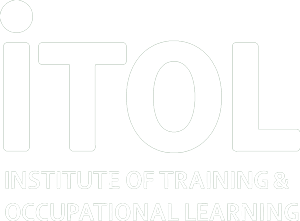iTOL Questions is a series of mini-blog posts that aim to answer common L&D related questions and provide help and support for L&D professionals.
The Issue:
When you enter a new role in L&D it will often be in a completely new organisation which has a completely different purpose, direction and aims. It is your job to quickly adapt and get to grips with the way that this organisation works. You are in the business of training and it is important to know what it is that you are dealing with. Referring back to one of our previous posts on why training is undervalued, improper knowledge of the industry in which you work can lead to a negative impact on perceptions of the L&D profession.
It is therefore vital for you as a trainer to quickly find out how people learn, but how do you do this?
There are a number of questions that you must ask in order to establish how the employees within this organisation learn.
Firstly, you must establish how much of their job knowledge is a direct result of formal training, this could be classroom learning or online resources. This can help you to understand how much learning is done on the job in this organisation, it might be that formal training is not a particularly popular mode of learning for these employees.
Find out how much of the learning is done through the peers within the organisation, if the employees learn from the people that they work with better than in a classroom environment then you can incorporate this into your training plans and maximise the learning output.
Establish how much learning is done by the individuals alone, it might be that employees learn best from themselves rather than their colleagues or even formal classroom training sessions. If you give them the opportunity to carry out some independent study, over which they have full control they may learn more about their role than they would in a classroom. (A negative of this is that if the employees do not work well like this then they will be unproductive and essentially waste precious training time and resources, so ensure that your assessment is accurate).
Get into the workplace and ask the employees these important questions as the responses will help to shape your training sessions. Be aware of the differences in learning in levels of seniority and the different departments. Noticing the right patterns early on might in fact benefit you in developing your training plan as you can categorise the staff and group similar learning types together.
Also be aware of the changing states of learning; the ways that people learn are not set in stone. It is likely that over time learning methods change, there are a number of factors as to why this happens and it is your job to monitor this. There is no point in generating a training plan based on outdated learning motives. Keep it up to date, and don’t forget to be analytical.

